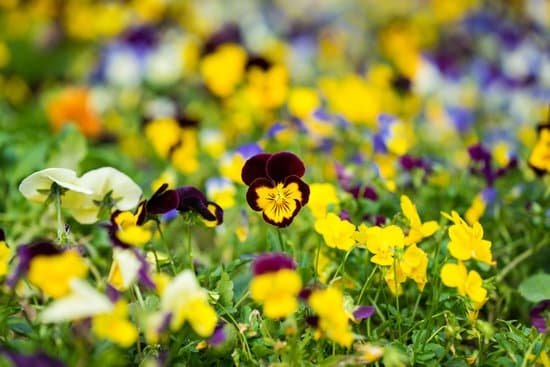Indoor house gardening ideas have become increasingly popular as people seek to bring a touch of nature into their homes. Not only do indoor plants add a beautiful aesthetic to any room, but they also have numerous benefits for improving air quality and boosting mood. With the right selection of plants and creative design ideas, you can transform your living space into a green oasis that is both visually appealing and beneficial to your well-being.
Indoor plants are not just decorations; they actually play a vital role in purifying the air by absorbing toxins and releasing oxygen. Studies have shown that having plants indoors can reduce stress, increase productivity, and even help to lower blood pressure. Whether you are a seasoned plant parent or just starting out, there are plenty of easy-to-care-for options like snake plants, pothos, and spider plants that can thrive in almost any environment with minimal attention.
By incorporating indoor gardening into your home, you can create a tranquil escape from the hustle and bustle of daily life. From setting up a herb garden in your kitchen for fresh ingredients to experimenting with DIY plant projects like terrariums and macrame hangers, there are endless possibilities to explore. Stay tuned for more tips on how to best care for your indoor plants and overcome common challenges that may arise along the way.
Best Indoor Plants for Beginners
When venturing into indoor house gardening, selecting the right plants can make all the difference, especially for beginners. Opting for easy-to-care-for plants can help build confidence and ensure a successful start to your indoor gardening journey. Here are some of the best indoor plants for beginners that are known for their resilience and low maintenance requirements:
- Snake Plants: Also known as mother-in-law’s tongue, snake plants are hardy, drought-tolerant plants that thrive in low light conditions. They make a stylish addition to any room with their striking upright leaves.
- Pothos: Pothos plants, often referred to as devil’s ivy, are another foolproof choice for beginner indoor gardeners. These trailing vines come in various shades of green and can tolerate a wide range of light conditions.
- Spider Plants: Spider plants are popular for their air-purifying qualities and unique spiderettes that dangle down from the mother plant like spiders on a web. They prefer bright, indirect light and only need occasional watering.
These indoor house gardening ideas provide a great starting point for novices looking to introduce greenery into their homes without feeling overwhelmed by complex care routines. By choosing resilient plants like snake plants, pothos, and spider plants, beginners can enjoy the benefits of indoor gardening while gaining confidence in caring for their new leafy companions.
Creative Indoor Garden Design Ideas
Indoor house gardening is a wonderful way to bring nature into your living space and create a serene environment. When it comes to creative indoor garden design ideas, there are various ways to arrange plants that can enhance the aesthetic appeal of your home. One popular method is to use different plant sizes and textures to create visual interest. For example, pairing tall, leafy plants with smaller succulents can add depth to your indoor garden.
Another creative idea for indoor gardening is to utilize hanging planters. Hanging planters are not only a great space-saving solution but also add a unique design element to any room. You can hang them from the ceiling or mount them on walls to create a vertical garden effect. This not only maximizes the use of available space but also adds a touch of greenery at eye level, making it a focal point in your home decor.
To truly transform any room into a green oasis, consider clustering plants together in groups or creating a “green corner” where multiple plants can thrive together. This botanical arrangement can create a cozy and inviting atmosphere while also benefiting from the microclimate they create collectively.
By strategically placing plants near windows for light exposure and grouping them based on their water and care needs, you can achieve a lush indoor garden that will uplift your mood and improve the air quality of your home.
| Aspect | Detail |
|---|---|
| Benefits | Enhanced aesthetic appeal of home |
| Ideas | Utilize hanging planters for space-saving solutions |
| Tips | Grouping plants based on light exposure and care needs |
Indoor Herb Garden Inspiration
Growing herbs indoors is a rewarding and practical way to add a touch of greenery to your home while also enhancing your culinary creations. With just a little bit of attention and care, you can enjoy the convenience of having fresh herbs at your fingertips whenever you need them. Here are some tips and tricks for creating a thriving indoor herb garden:
- Choose the Right Herbs: When selecting herbs for indoor gardening, opt for those that thrive in indoor conditions such as basil, mint, parsley, cilantro, and chives. These herbs do well in pots on windowsills or under grow lights.
- Provide Adequate Light: Herbs require plenty of sunlight to grow successfully. Make sure to place your herb garden in a sunny spot near a window where they can receive at least 6-8 hours of sunlight per day. If natural light is limited, consider using grow lights to supplement.
- Proper Watering and Drainage: Overwatering is one of the most common mistakes made when growing herbs indoors. Ensure your pots have drainage holes to prevent waterlogging and only water when the top inch of soil feels dry to the touch.
By following these indoor herb gardening tips, you can enjoy a bountiful supply of fresh herbs year-round for all your cooking needs. Not only will you save money by growing your own herbs, but you’ll also add vibrant greenery to your living space that enhances both the visual appeal and fragrance of your home. Whether used in salads, soups, pasta dishes, or cocktails, freshly harvested herbs elevate every meal with their distinct flavors and aromas.
DIY Indoor Plant Projects
Indoor house gardening enthusiasts often look for creative ways to incorporate plants into their living spaces beyond just placing them in pots. One popular trend that has emerged is DIY indoor plant projects, which allow individuals to showcase their creativity while adding a personal touch to their green oasis. From crafting terrariums to making macrame plant hangers, there are endless possibilities for those looking to elevate their indoor gardening experience.
Terrariums are a great way to bring a mini ecosystem into your home and they can be customized to fit any style or aesthetic. These miniature garden landscapes housed in glass containers require minimal maintenance and are perfect for those with busy schedules who still want to enjoy the benefits of indoor plants.
Whether you prefer an open or closed terrarium, there are plenty of workshops and tutorials available online to guide you through the process of creating your own botanical masterpiece.
Another popular DIY project for indoor house gardening is making macrame plant hangers, which add a bohemian touch to any room. Macrame plant hangers are not only stylish but also functional, as they help save space by allowing you to hang your plants from the ceiling or walls.
With just a few basic materials like rope and wooden beads, you can create stunning hanging planters that will turn your indoor garden into a work of art. Let your creativity flow and experiment with different knotting techniques to make unique designs that reflect your personality.
For those looking for more plant-related crafts, consider painting decorative pots, creating wall-mounted plant displays, or even designing your own plant labels. The possibilities are truly endless when it comes to DIY indoor plant projects, so don’t be afraid to get creative and have fun cultivating your very own urban jungle at home.
| DIY Indoor Plant Projects | Benefits |
|---|---|
| Terrariums | Low maintenance, customizable |
| Macrame Plant Hangers | Stylish, space-saving |
| Decorative Pot Painting | Personalized touch |
Indoor Plant Care Tips
Watering Tips
Proper watering is crucial for the health of indoor plants. Overwatering can lead to root rot, while underwatering can cause wilting and dryness. The key is to find the right balance by checking the moisture level of the soil regularly. It’s essential to water plants when the top inch of soil feels dry to the touch. Different plants have varying watering needs, so it’s important to research specific requirements for each plant in your indoor garden.
Sunlight Requirements
Sunlight is essential for photosynthesis, which is vital for plant growth. Placing indoor plants in locations with adequate natural light is crucial for their well-being. While some plants thrive in direct sunlight, others prefer indirect or low light conditions. Understanding the light requirements of each plant will help you position them correctly in your home. If natural light is limited, consider using grow lights to supplement the lighting for your indoor house gardening ideas.
Fertilizing and Feeding
Indoor plants require nutrients to thrive, and fertilizing is a great way to provide them with essential elements for growth. Choose a balanced indoor plant fertilizer and follow the instructions on the packaging carefully. Over-fertilizing can be harmful to plants, so it’s important not to exceed the recommended dosage. Fertilize your indoor plants during their active growing season, typically in spring and summer, and reduce feeding during fall and winter when growth slows down.
From watering techniques to sunlight requirements and fertilizing tips, caring for indoor plants requires attention to detail and regular maintenance. By following these guidelines on caring for your indoor house gardening ideas, you’ll create a thriving green oasis in your home that brings beauty and benefits both indoors and out.
Benefits of Indoor Gardening
Indoor gardening is not just a hobby; it can also have significant positive impacts on our mental well-being. Caring for plants and surrounding ourselves with greenery has been shown to reduce stress, anxiety, and depression. The act of nurturing a plant, watching it grow, and seeing the fruits of your labor can bring a sense of accomplishment and purpose. In addition, having indoor plants can improve our mood and overall outlook on life.
Research has found that indoor plants can help improve concentration and productivity, making them perfect additions to home offices or study spaces. The presence of greenery indoors has also been linked to better sleep quality, as plants can increase oxygen levels in the air and promote relaxation. Being surrounded by nature inside our homes can create a sense of tranquility, making it easier for us to unwind after a long day.
Incorporating indoor house gardening ideas into our living spaces can transform them into peaceful sanctuaries that promote mental clarity and emotional well-being. Whether it’s arranging easy-to-care-for plants in a sunny corner or creating a mini herb garden in the kitchen, the benefits of indoor gardening go beyond aesthetics. By nurturing plants indoors, we not only enhance the beauty of our homes but also nurture our minds and spirits in the process.
Indoor House Gardening Challenges
When it comes to indoor house gardening, there are certain challenges that gardeners may face along the way. One common obstacle is dealing with pests that can potentially harm your plants. However, there are natural remedies such as neem oil or introducing beneficial insects like ladybugs that can help protect your indoor garden from unwanted visitors. Regularly inspecting your plants for any signs of pests and acting promptly can also prevent infestations from escalating.
Another challenge of indoor house gardening is the lack of sunlight, especially in spaces with limited natural light sources. In such cases, choosing low-light tolerant plants like peace lilies, ZZ plants, or snake plants can thrive even in areas with minimal sunlight.
Additionally, using artificial grow lights specifically designed for indoor plants can supplement their light requirements and ensure healthy growth. Proper placement of these lights and adjusting the duration based on the plant’s needs are crucial for indoor gardening success in low-light conditions.
Limited space is another common challenge for indoor gardeners. In urban environments or small apartments, finding room for all your beloved plants can be tricky. Vertical gardens, hanging planters, wall-mounted shelves, and plant stands are excellent solutions to maximize space while adding a touch of greenery to your home decor.
Embracing creative ways to display your indoor plants not only saves space but also enhances the overall ambiance of your living space. By overcoming these challenges with practical solutions and innovative ideas, you can enjoy the benefits of indoor house gardening and create a green oasis within your home.
Frequently Asked Questions
How Do I Start an Indoor Garden at Home?
Starting an indoor garden at home can be a rewarding experience. Begin by choosing the right location with enough natural light for your plants to thrive. Select containers or pots suitable for indoor gardening and ensure proper drainage.
Choose the right plants based on your gardening skills and available space, whether it’s herbs, leafy greens, or flowering plants. Make sure to water your plants regularly, provide adequate humidity, and monitor them for any signs of pests or diseases.
What Veggies Can You Grow Indoors?
There are plenty of veggies that you can grow indoors, even if you have limited space. Leafy greens like lettuce and spinach thrive in indoor environments with sufficient sunlight. Herbs such as basil, parsley, and mint are also great options for an indoor vegetable garden.
Root vegetables like carrots and radishes can be grown in deep containers with well-draining soil. Tomatoes and peppers are a bit more challenging but can still be grown indoors if you provide enough light and warmth.
How Do I Turn My Room Into an Indoor Garden?
Transforming your room into an indoor garden is a fun project that can bring a touch of nature into your living space. Start by selecting the right plants that will thrive indoors based on the amount of natural light available in your room. Arrange your plants strategically around windows or under grow lights to ensure they receive adequate sunlight.
Consider adding shelving units or hanging planters to maximize vertical space in your room. Invest in proper watering tools like a watering can or mister to keep your indoor garden hydrated without making a mess. Finally, add some decorative elements like plant pots or stands to enhance the overall look of your room as an indoor garden sanctuary.

Welcome to my gardening blog! I am passionate about plants and enjoy sharing my knowledge and experiences with others. In this blog, I will write about everything related to gardening, from tips on how to get started to updates on my own garden projects.





